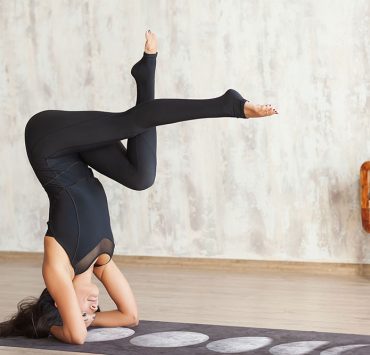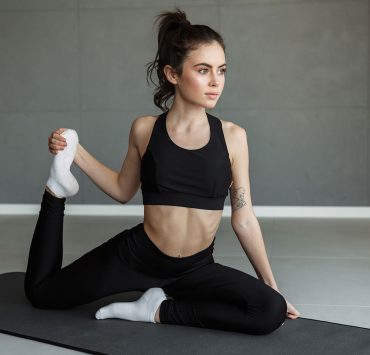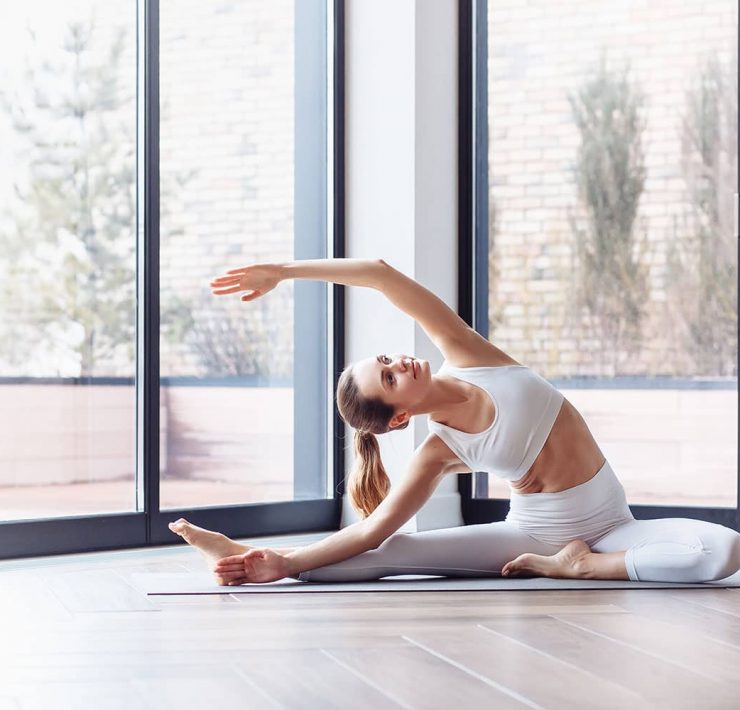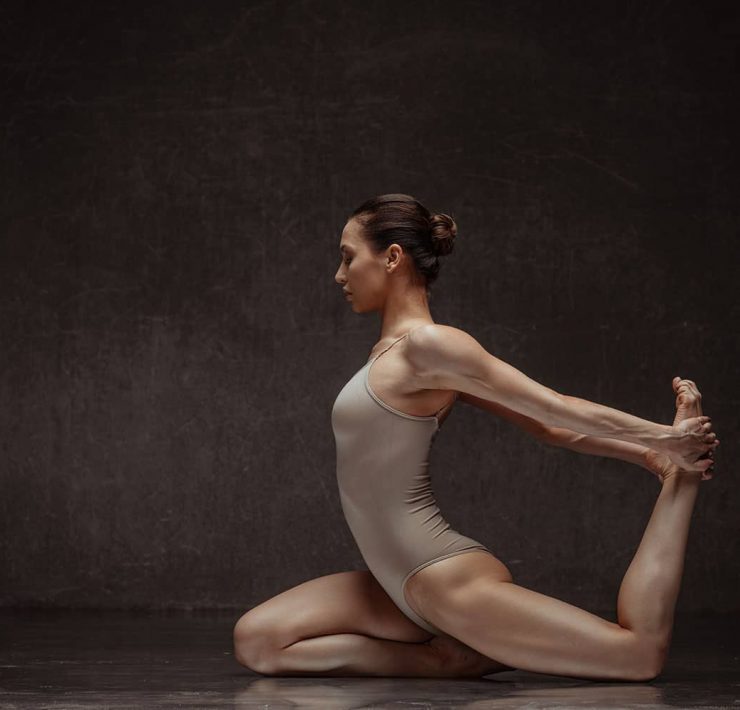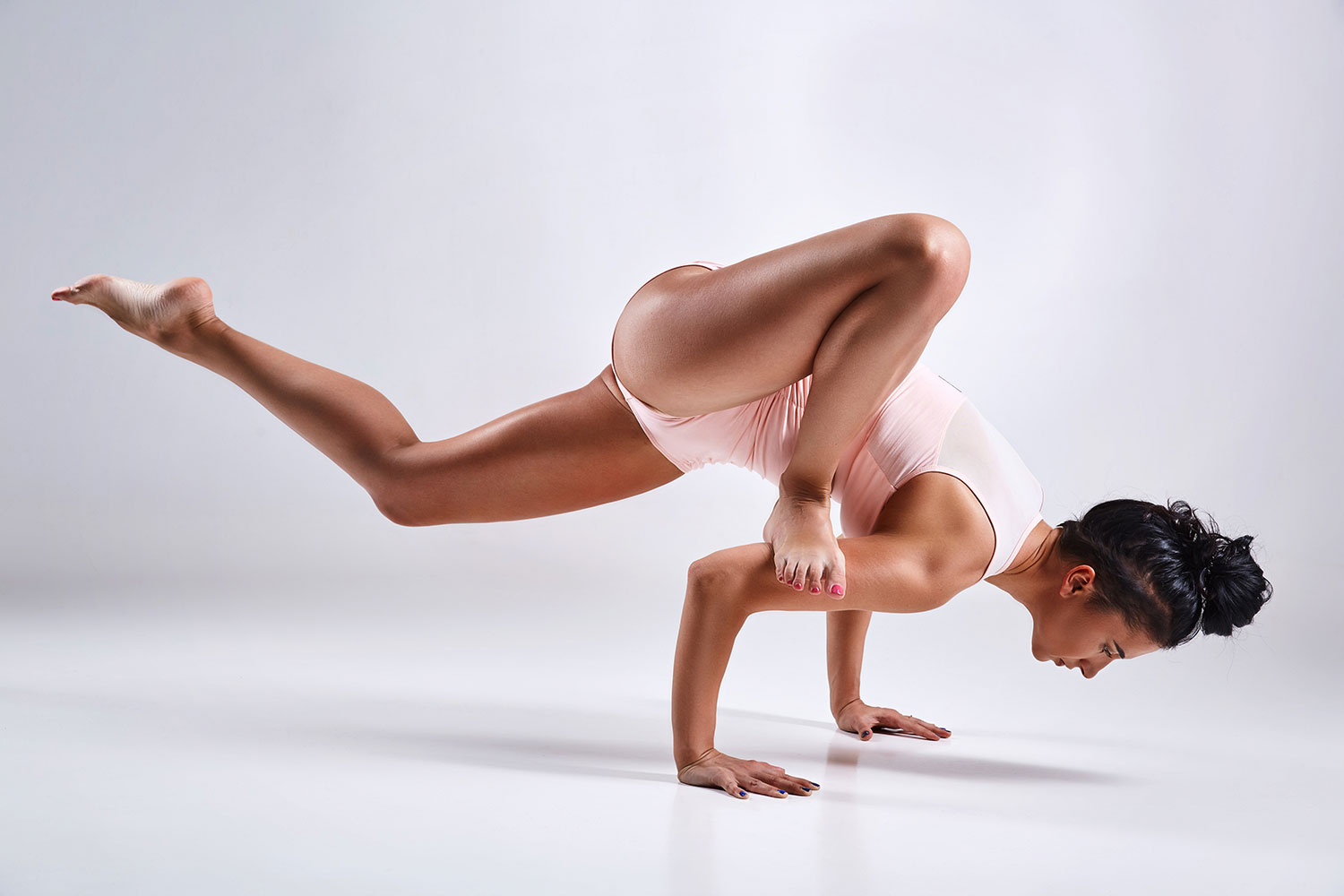
Former nutrition specialist Alexandra Mackenzie knows what it means to…
The beauty of yoga is that you can approach your practice through a variety of levels, including beginner, intermediate, and advanced.
Most of us doing yoga aren’t necessarily doing these advanced postures.
But it’s always fun to see an experienced yogi twist themselves into a pretzel with seemingly little effort.
Below are 35 of the hardest yoga poses. These are not intended for beginners and should only be attempted with a qualified yoga instructor by your side.
But if you’ve been doing yoga for years, go ahead and try out these poses to strengthen and enhance your practice.
#1 Taraksvasana — Handstand Scorpion Pose
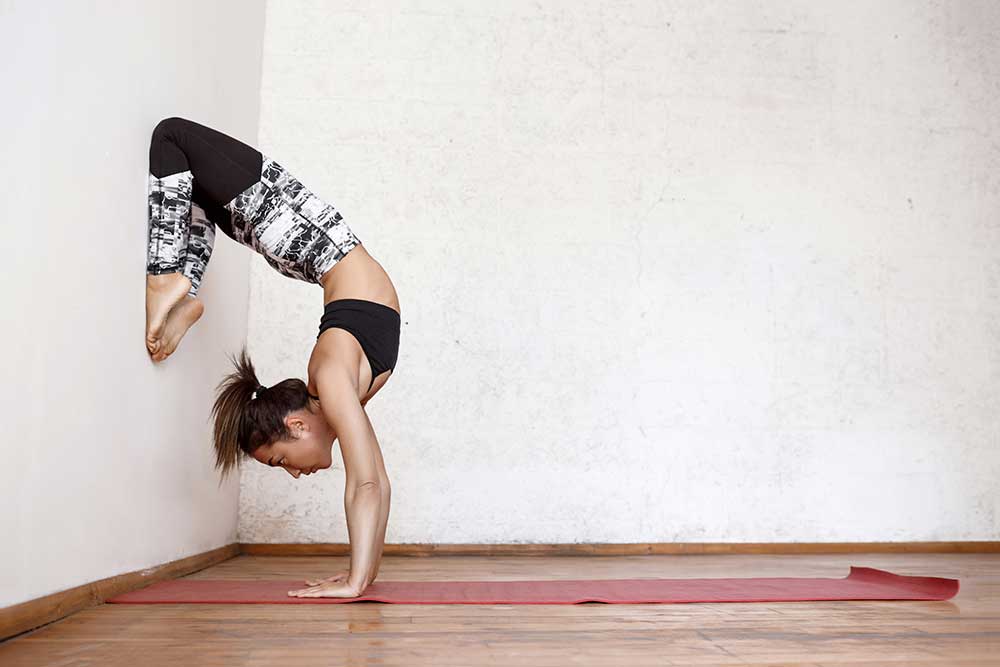
This is perhaps the most difficult yoga pose there is, but then again, this list is made up of everything hard.
The handstand scorpion pose requires good balance, plenty of strength, and extreme flexibility.
If you’re attempting this pose for the first time, try using the wall for assistance, placing yourself about one foot away from your support.
This pose improves your balance while strengthening your shoulders, abdominals, and back muscles.
To learn how to do this pose, click here.
#2 Vasisthasana — The Side Plank Pose
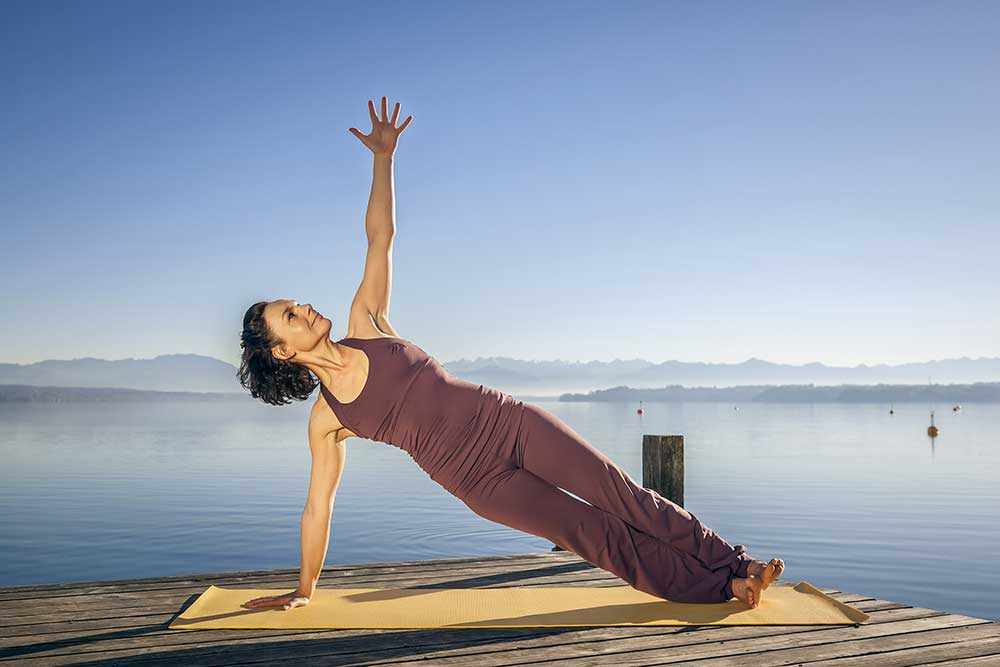
This pose is deceivingly difficult as it doesn’t seem too hard to get into. But that’s just the beginning of how hard this pose can be.
The side plank requires strength, flexibility, and balance while strengthening your glutes, abdominals, and obliques.
On average, this posture is held for about 2 minutes.
To learn how to master the side plank, click here.
#3 Halasana — The Plow Pose
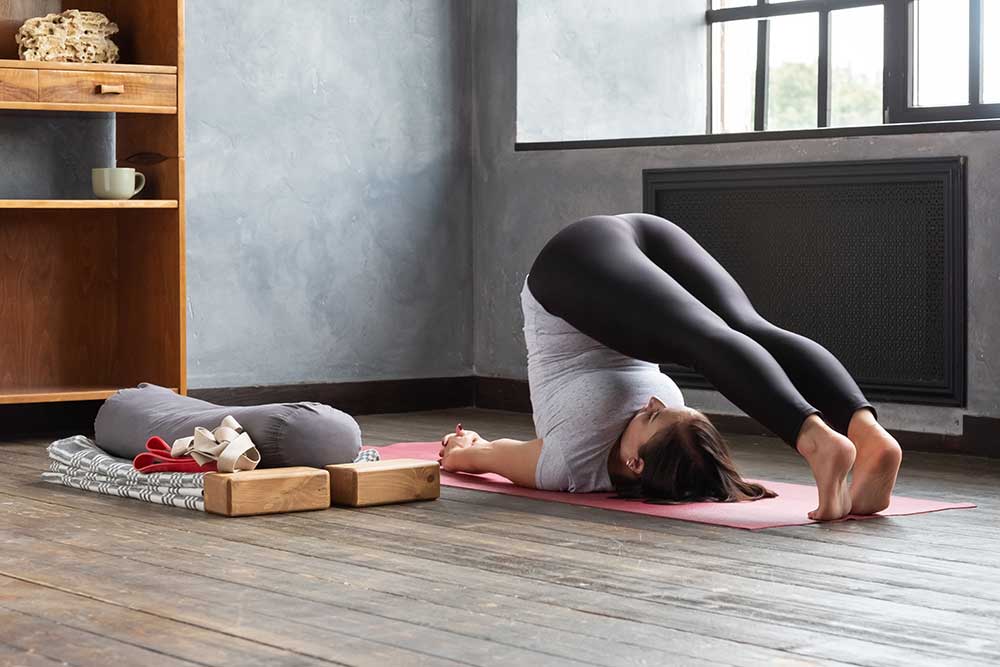
Another deceivingly difficult pose, the plow is actually meant to help you relax.
When accomplished correctly, no muscles are stressed in this pose, allowing you to calm down and relax into the posture.
Plow Pose is typically held for about 5 minutes.
To get into this posture correctly and feel the relaxing benefits, click here.
#4 Sirsasana li Padmasana — The Tripod Headstand with Lotus Legs Pose
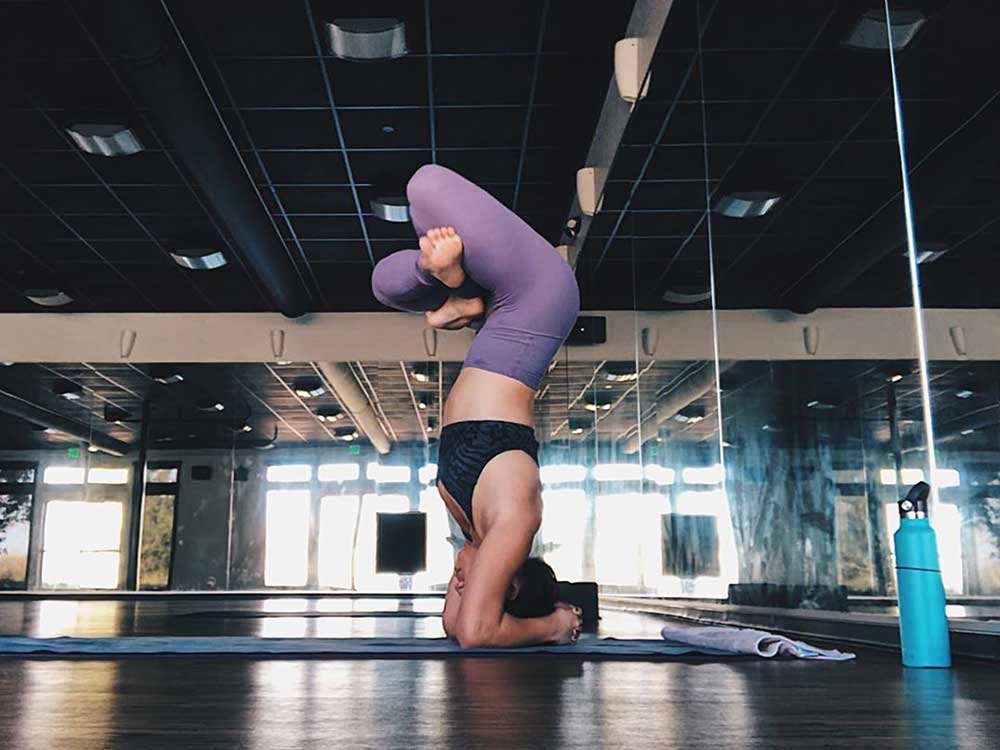
Again, this pose looks simple but is truly one of the most difficult yoga postures to do correctly. Are you sensing a theme here?
This pose should only be attempted by advanced practitioners with a qualified yoga instructor present.
Because this pose incorporates two different postures, an important first step is to practice Lotus Legs before getting into an inverted headstand.
For your first attempt, only hold this pose for about 8 breaths. Beginners should do the headstand near a wall to help with balance.
Sirsasana li Padmasana ultimately benefits the muscle groups in your arms, shoulders, abdominals, hips, and neck.
To work yourself into this pretzel, click here.
#5 Yoganidrasana — Yoga Sleeping Pose
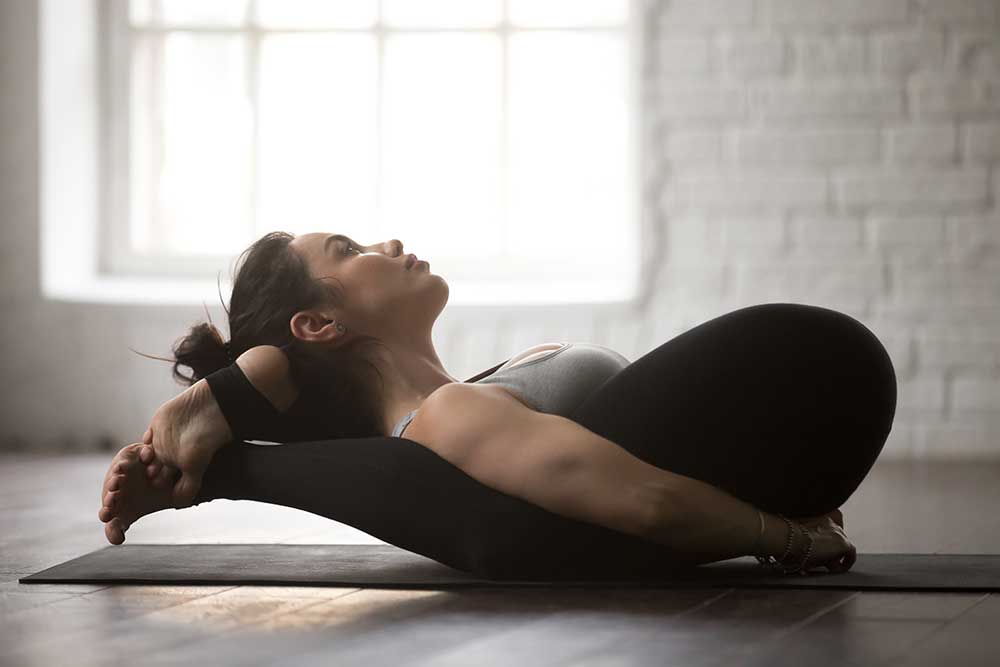
This is the pivotal pretzel pose that yoga is known for and should only be attempted by extremely flexible practitioners.
It is said that some yoga practitioners even sleep in this pose, which is how it got its namesake.
But if you’re not in it for that intensity, this pose is certainly not for everyone.
Breathing can be difficult when getting into position. Still, once you have your body situated correctly, your breath should feel more relaxed.
The biggest benefit of Yoganidrasana is the full stretching of the spine and its associated muscles.
This pose will also improve your circulation, reduce stress, and any symptoms related to menopause, and align your spine.
If you’re flexible and strong-willed, click here to try out this pose.
#6 Gandha Bherundasana — Formidable Face Pose
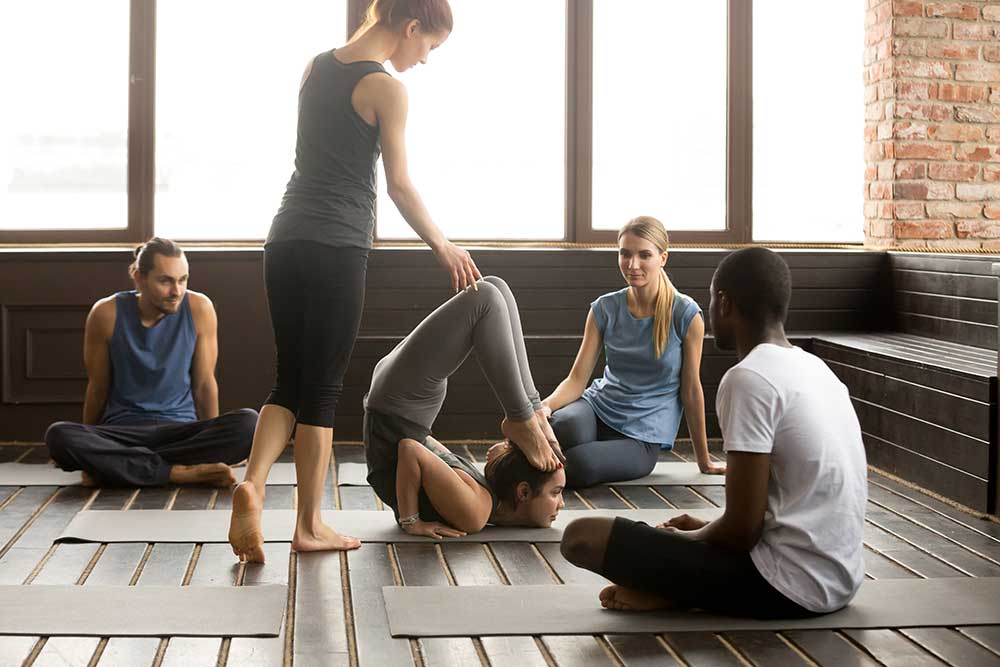
This is another pretzel pose that is only recommended for advanced yoga practitioners.
Gandha Bherundasana requires extreme flexibility, balance, and a good amount of strength.
It helps to strengthen your shoulders and thighs while stretching your abdominal muscles. It also helps to increase circulation throughout your body.
Get your game face on and try out this pose by clicking here.
#7 Astavakrasana — Eight Angle Pose
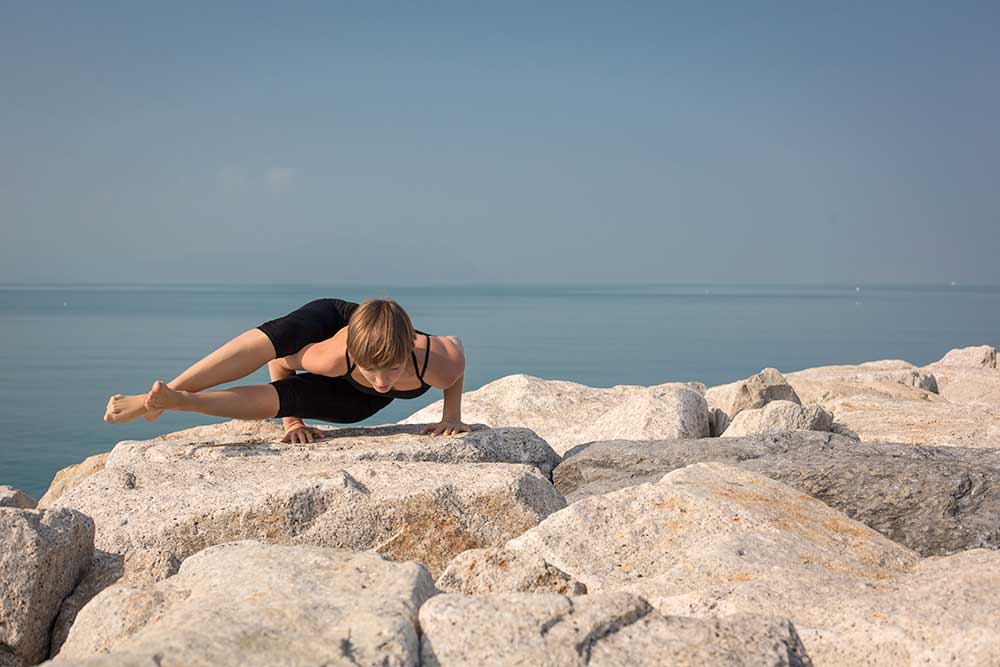
Practitioners who attempt this pose should have good arm strength and a solid sense of balance.
Astavakrasana benefits your arms, shoulders, and abdominal muscles while improving your overall balance.
To learn how to get into this pose, click here.
#8 Savasana — Corpse Pose
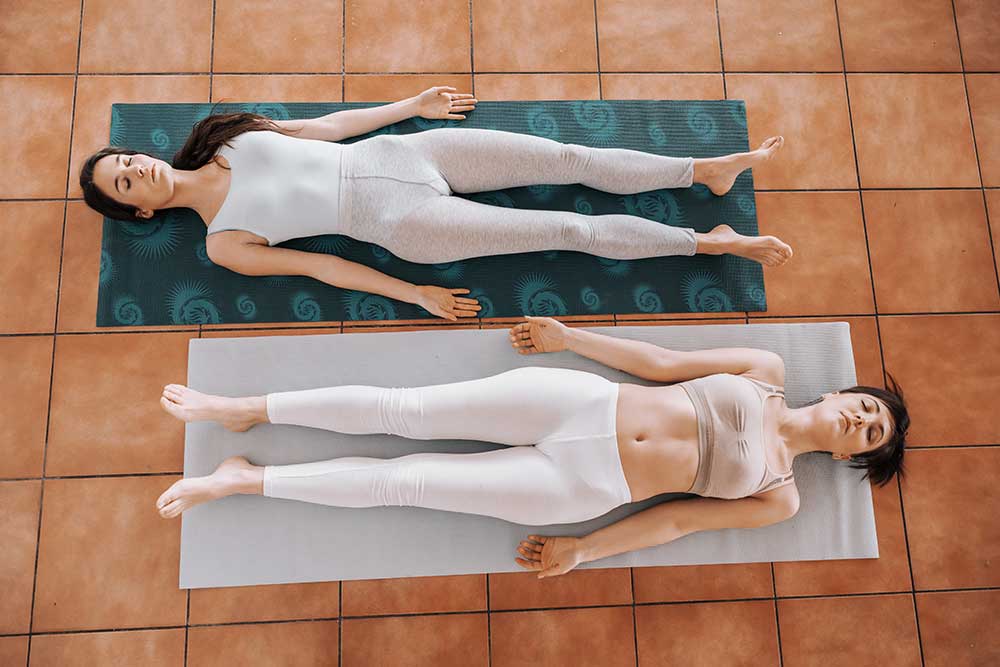
While Savasana truly looks like the easiest pose in yoga, it can actually be the most difficult for some practitioners.
The objective is to release all worries and thoughts in your mind while relaxing your entire body.
Doesn’t sound too easy when it’s spelled out, huh?
Commonly done at the end of yoga sessions, many don’t actually know the correct way to perform this pose.
When coming out of Savasana, roll onto one side with your head still on the mat and breathe several times. Your head should be the last part of your body touching the floor before you sit up.
Savasana will help relax and rejuvenate your entire being.
To gain the benefits of this pose, click here for more tips and guidance.
#9 Eka Hasta Vrksasanav — One Handed Tree Pose
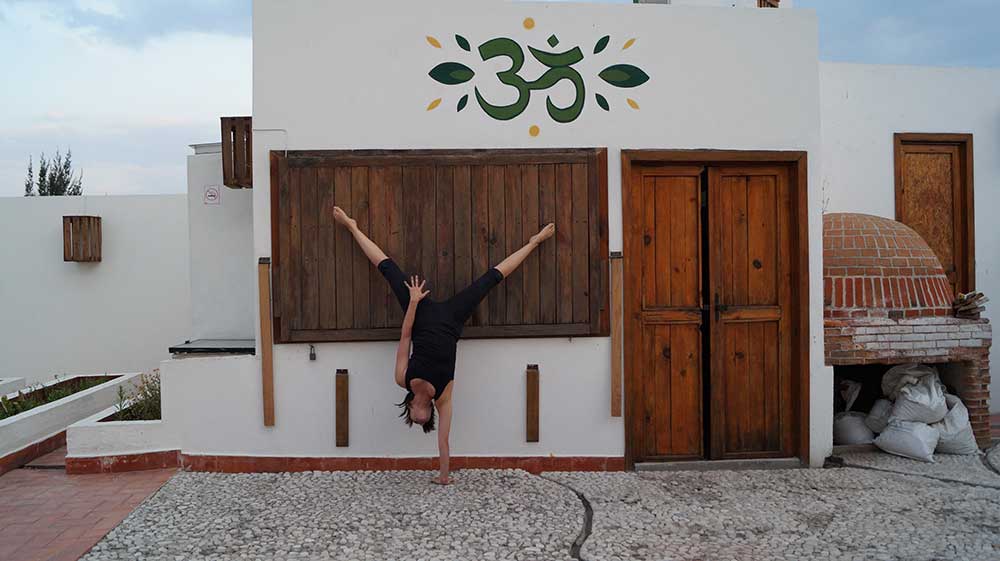
Eka Hasta Vrksasanav is a challenge for even those who have great balance and strength.
This pose calls for control of both of these variables while inverted.
The difficult posture helps to develop your wrist and elbow as it provides stability control. It also strengthens your arm and abdominal muscles.
Once in this pose, the mind will clear, and your breathing will be relaxed. But it certainly takes a while to master.
To learn how to get into this pose, click here.
#10 Bhairavasana — Destroyer of the Universe Pose
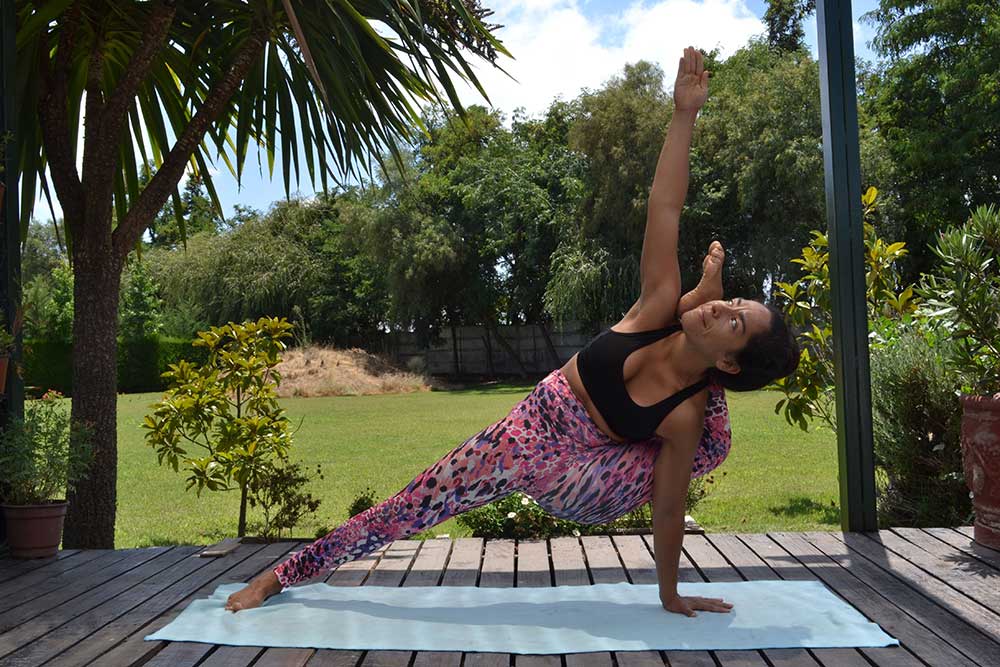
Practitioners who attempt this pose should be flexible in the hips and have the balance and strength to easily do a side plank.
Holding this pose requires a strong mental focus.
It also develops and strengthens your abdominal and arm muscles while increasing flexibility in your hips and hamstrings.
Get ready to destroy the universe and tackle this pose by clicking here.
#11 Sirsa Padasana — Head to Foot Pose
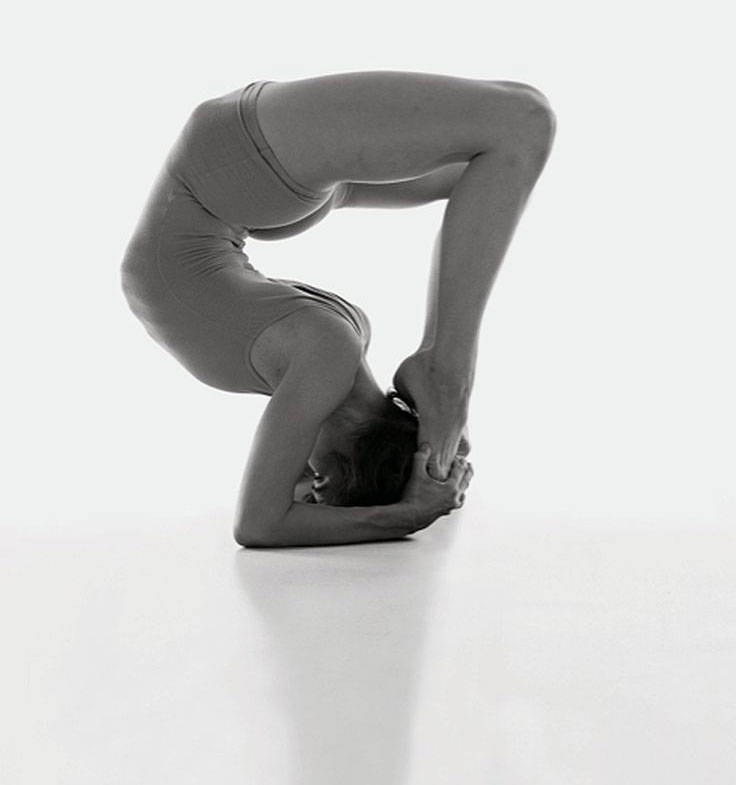
This is a challenging backbend that requires a combination of muscular strength in the back and deep flexibility in the spine.
Its physical benefits include a strong spinal stretch and increased blood flow to the brain.
Sirsa Padasana also helps to develop your concentration and focus.
To reap the benefits of this pose, click here and get into position.
#12 Pungu Mayurasana — Wounded Peacock Pose
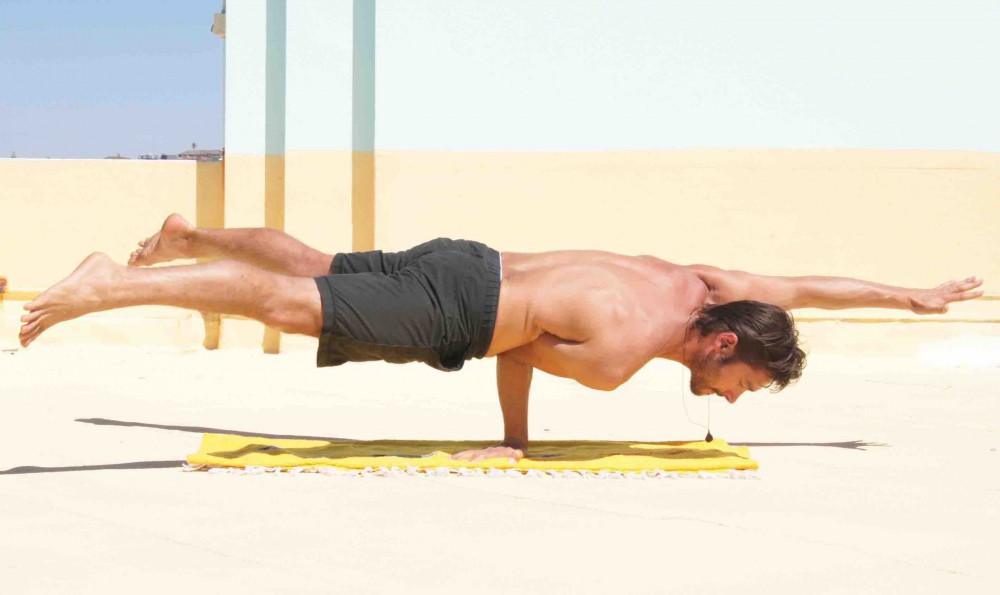
Pungu Mayurasana is a pose that requires a lot of wrist and core strength.
This posture strengthens your wrists, shoulders, and arms, and also improves your digestion due to the pressure applied to your abdomen by your arms.
This one-armed version of Peacock Pose tests your mental focus and should be balanced out by practicing on both sides.
Click here to learn how to be one with this pose.
#13 Tittibhasana – Firefly Pose
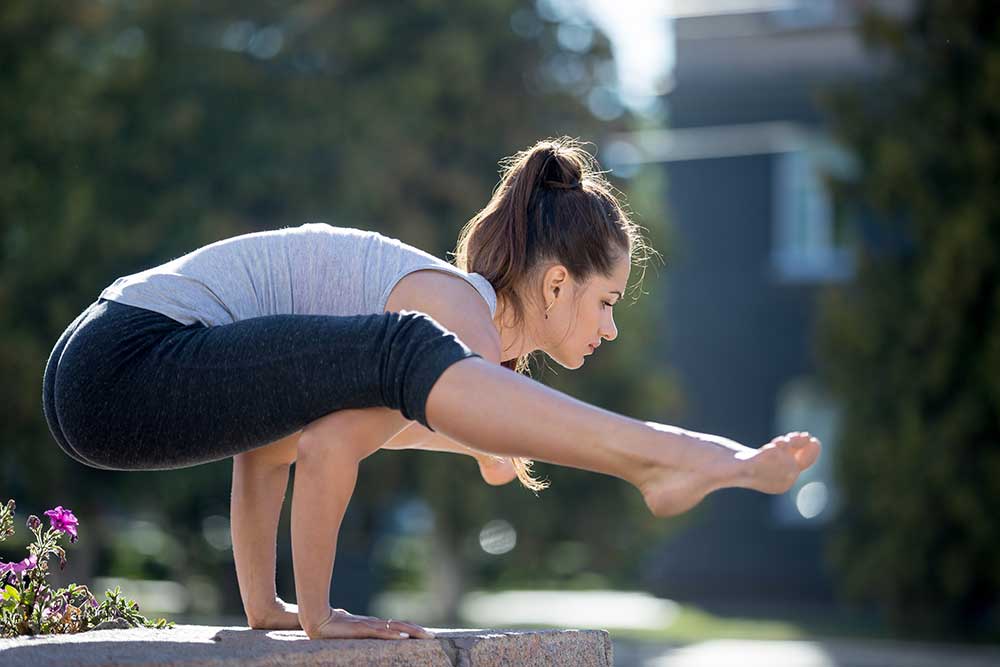
Tittibhasana is an arm balance that actually requires more core strength than arm strength.
This pose stretches your inner groin and back torso, strengthening your arms and wrists while toning your belly.
It is also a great posture to improve your sense of balance.
To learn more about Firefly Pose, click here.
#14 Kapotasana — King Pigeon Pose
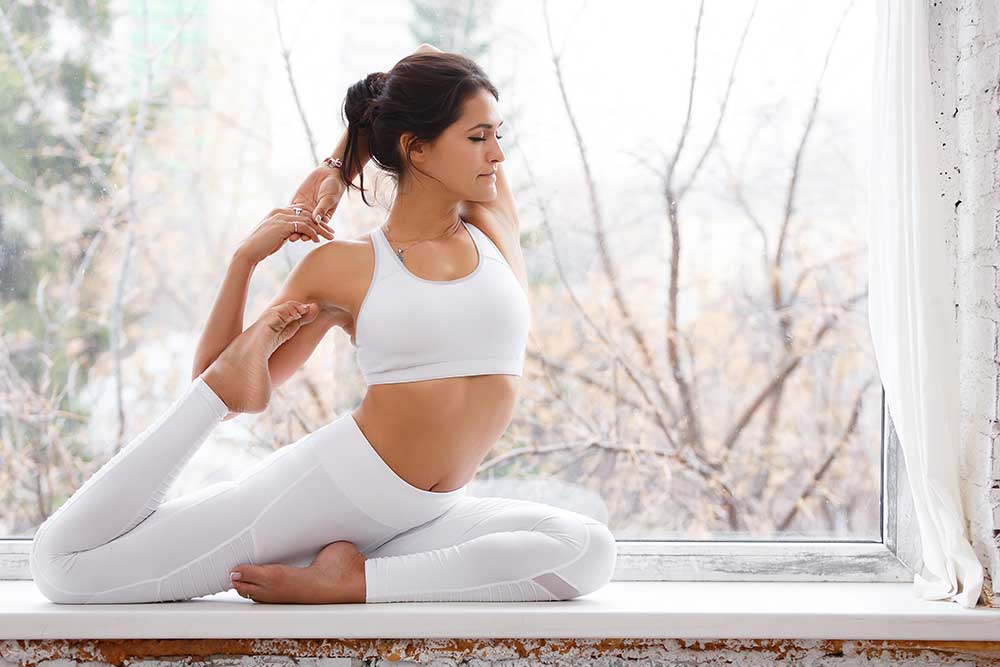
This pose invigorates the body and gives the spirit a lift.
This extremely deep backbend is only appropriate for advanced practitioners.
Kapotasana stretches every part of your body, including the entire front body, your ankles, thighs, groin, abdomen, chest, throat, and deep hip flexors.
It also strengthens your back muscles, improves your posture, and stimulates the organs of your abdomen and neck.
If you’ve been practicing for years and have a yoga instructor by your side, click here to learn how to attempt this pose.
#15 Natarajasana — Lord of the Dance Pose
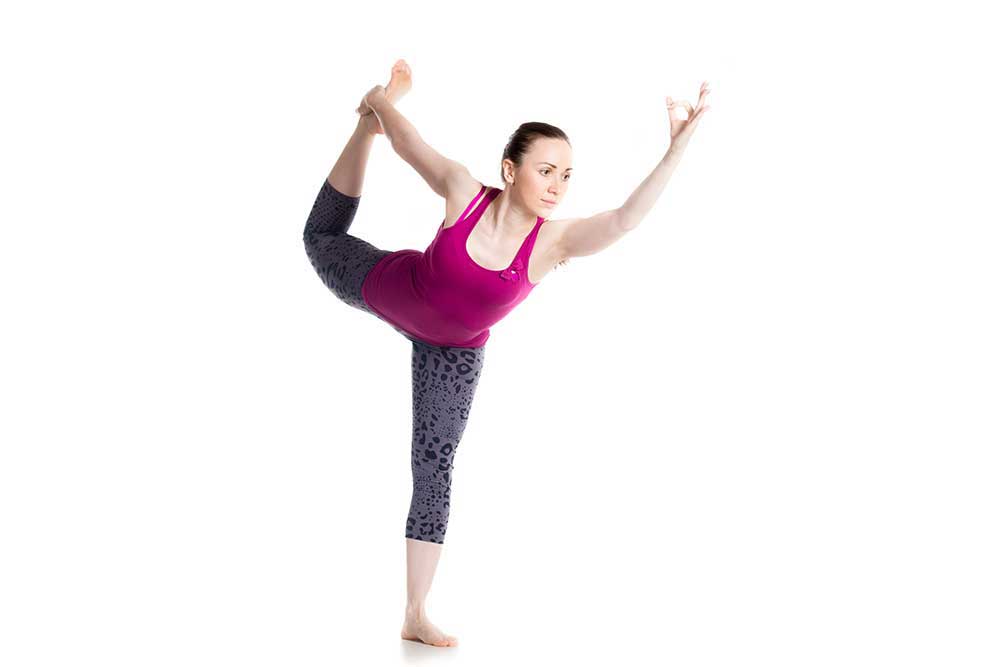
Natarajasana improves your posture and counteracts the effects of sitting at a desk all day.
This pose stretches out your chest and shoulders while strengthening your core and back muscles.
For the standing leg, Natarajasana strengthens the front of your hip and thigh, stretches the back of your thigh and hamstring, and strengthens your shin and ankle.
For the lifted leg, this pose strengthens the glutes and hamstrings and stretches the hip flexor, quadriceps and ankle.
Overall, Lord of the Dance Pose will help improve your balance, postural awareness, and body awareness. It can boost your energy, fight fatigue, and encourage your confidence and empowerment.
To learn how to get into this pose, click here.
#16 Padmasana — Lotus Pose
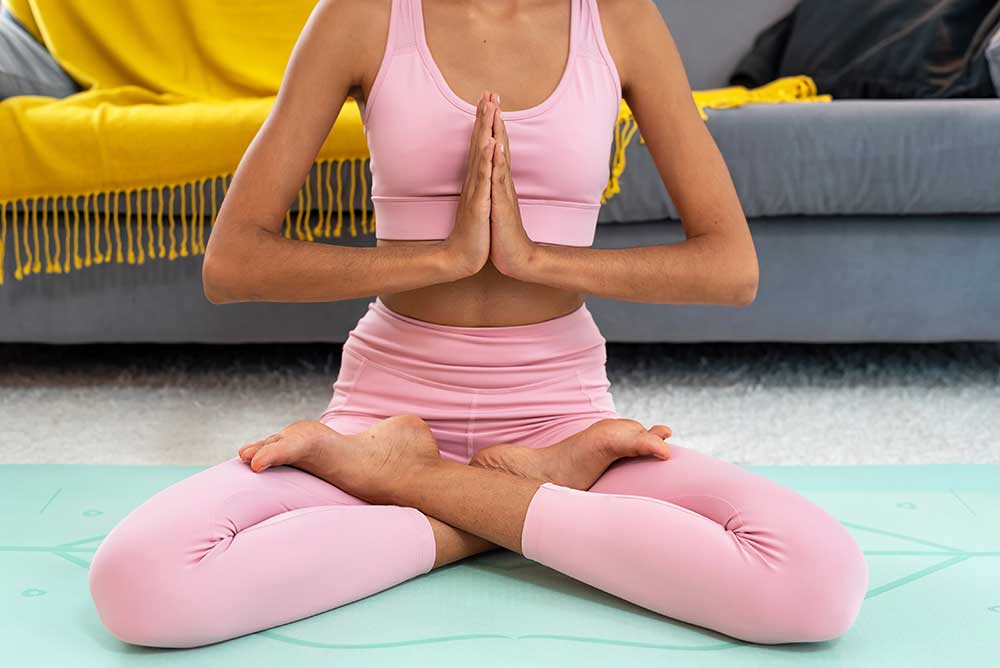
Lotus Pose is the ultimate yoga pose that requires open hips and consistent practice.
Traditional texts say that Padmasana has the power to destroy all diseases and awaken your kundalini.
Overall, Padmasana can calm your brain while stimulating the pelvis, spine, abdomen, and bladder. It also helps to stretch your ankles and knees while easing menstrual discomfort and sciatica.
To learn this ultimate yogi pose and tap into your kundalini, click here.
#17 Mayurasana — Peacock Pose
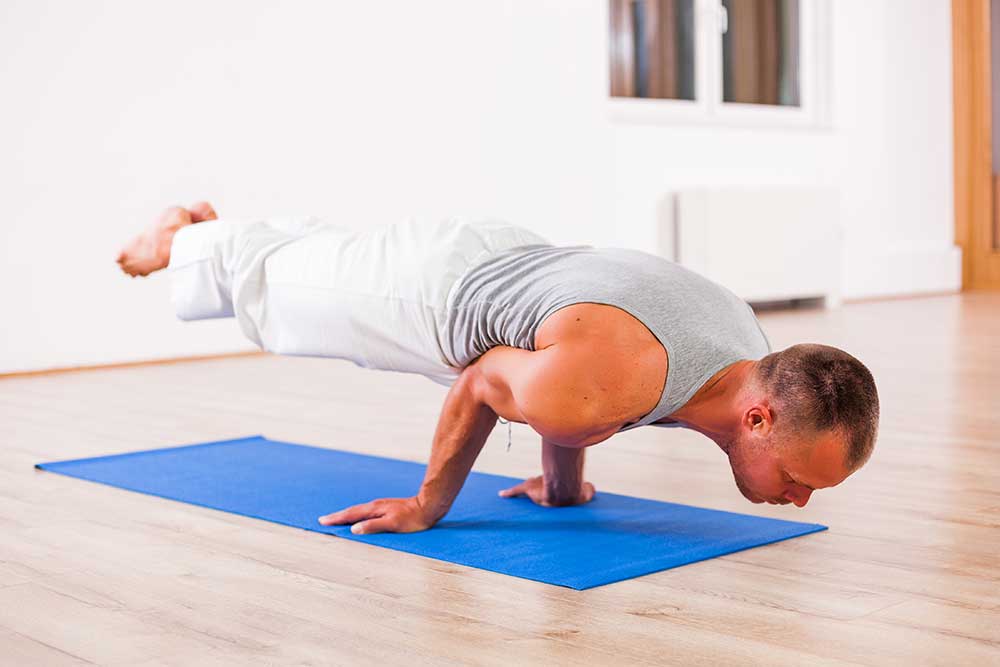
Accordingly to Hindu lore, the peacock is said to symbolize big things like immortality and love.
In this posture, Mayura Mudra represents the peacock’s beak. The ring finger and thumb are joined, and the middle finger is slightly bent. The other two fingers should be extended.
This pose strengthens your wrists, forearms, back torso, and legs while toning your abdomen.
Click here to learn more about the benefits of this pose.
#18 Eka Pada Koundinyasana I — Pose Dedicated to the Sage Koundinya I Pose
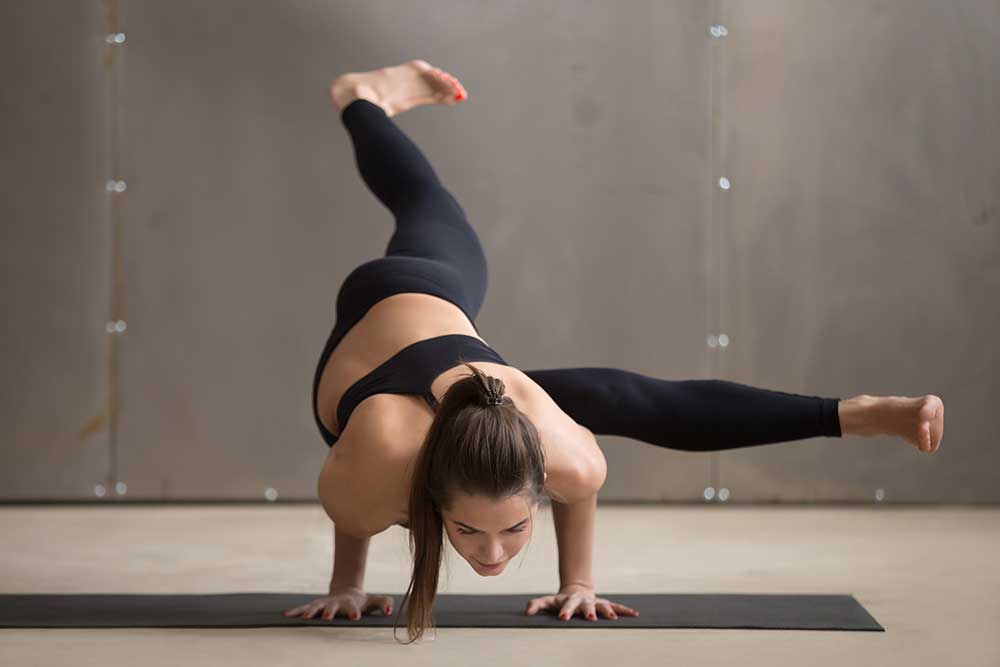
This pose is a lot. There’s a twist, legs are going separate ways, and there’s an arm balance.
For beginners attempting this pose, you can secure your balance by supporting your side leg on a bolster or resting your back leg on the seat of a chair.
Overall, this posture is meant to strengthen your arms and wrists while toning your belly and spine.
Click here to get into this pose and remember to go slowly.
#19 Eka Pada Koundinyanasana II — Pose Dedicated to the Sage Koundinya II Pose
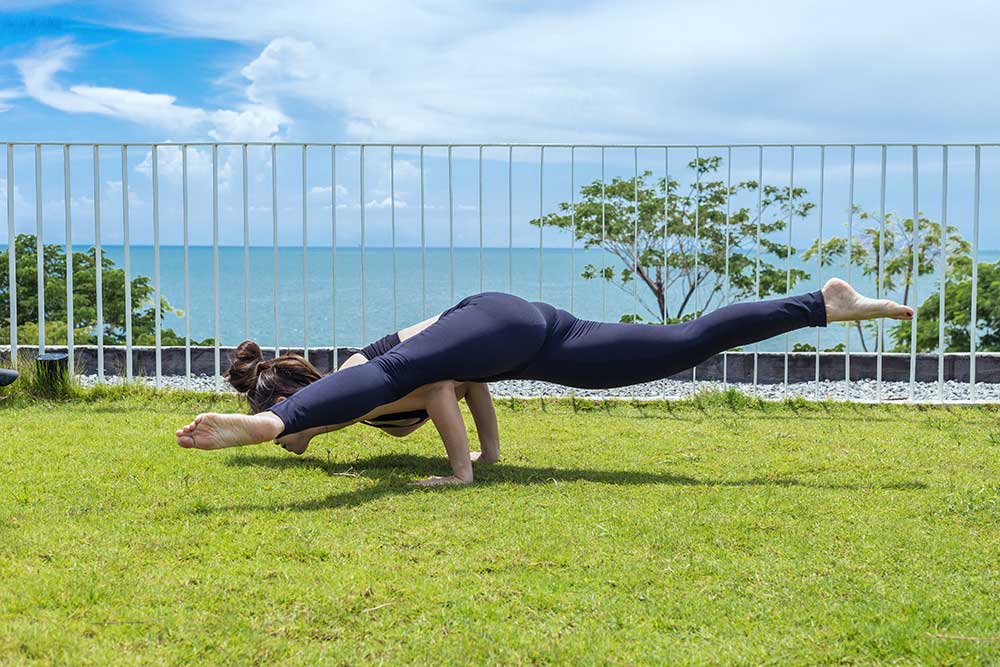
This posture strengthens your arms and wrists while toning your belly and spine. It is also said to boost your confidence.
If this is your first attempt, you can support one or both legs on a bolster or chair seat to secure your balance.
To learn this pose and reap its benefits, click here.
#20 Bhujapidasana — Shoulder-Pressing Pose
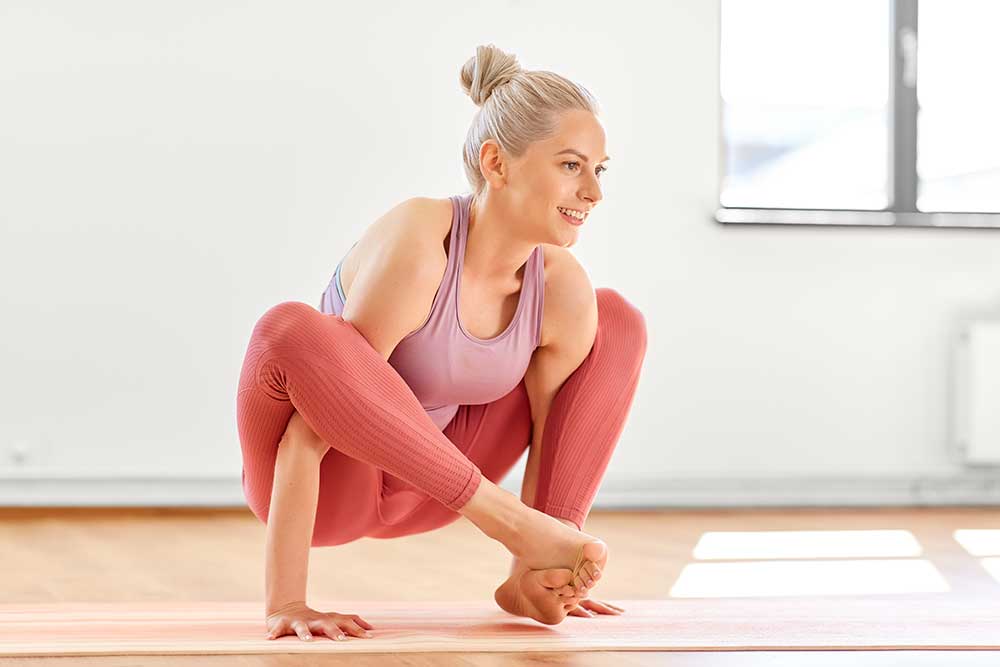
This arm balance relies on your positioning more than your strength, making it more accessible to students beginning their arm balance journey.
For beginners, try securing your balance by supporting your buttocks on a yoga block or bolster.
Over time, you will eventually be able to support yourself.
This pose strengthens your arms and wrists while toning your belly and improving your overall sense of balance.
To learn how to get into this pose, click here.
#21 Anantasana — Side-Reclining Left Leg Pose
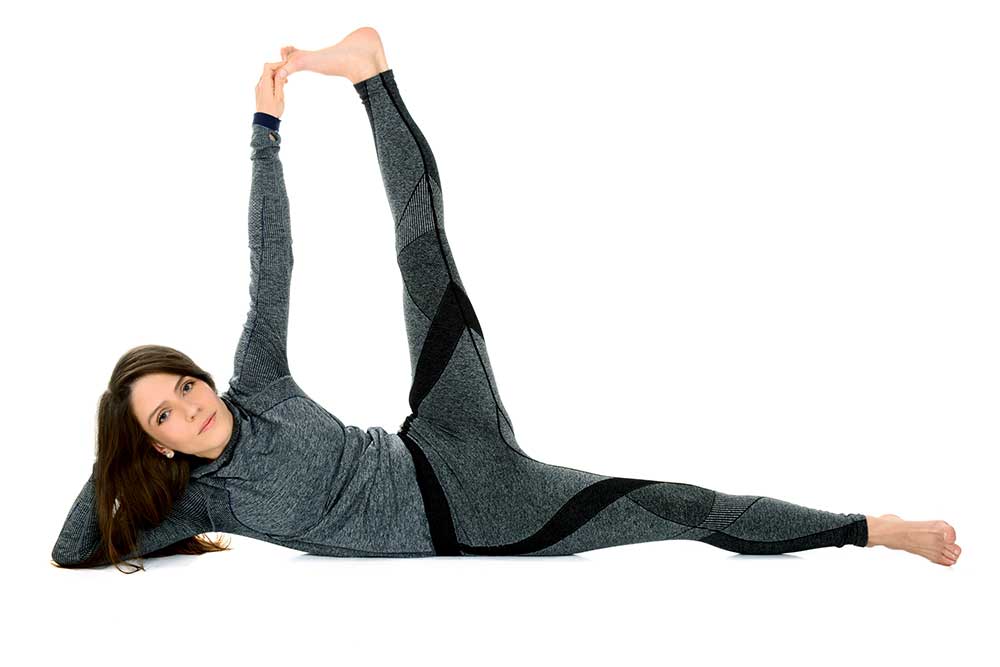
Anyone attempting this pose for the first time might feel unstable. You can press the soles of your feet into a wall and wedge a bolster against your back to stabilize yourself.
Anantasana ultimately stretches the backs of your legs, sides of your torso, and helps to tone your belly.
Going slow and listening to your body is key.
So if you feel ready, click here to start your journey with this pose.
#22 Dwi Pada Viparita Dandasana — Upward Facing Two-Foot Staff Pose
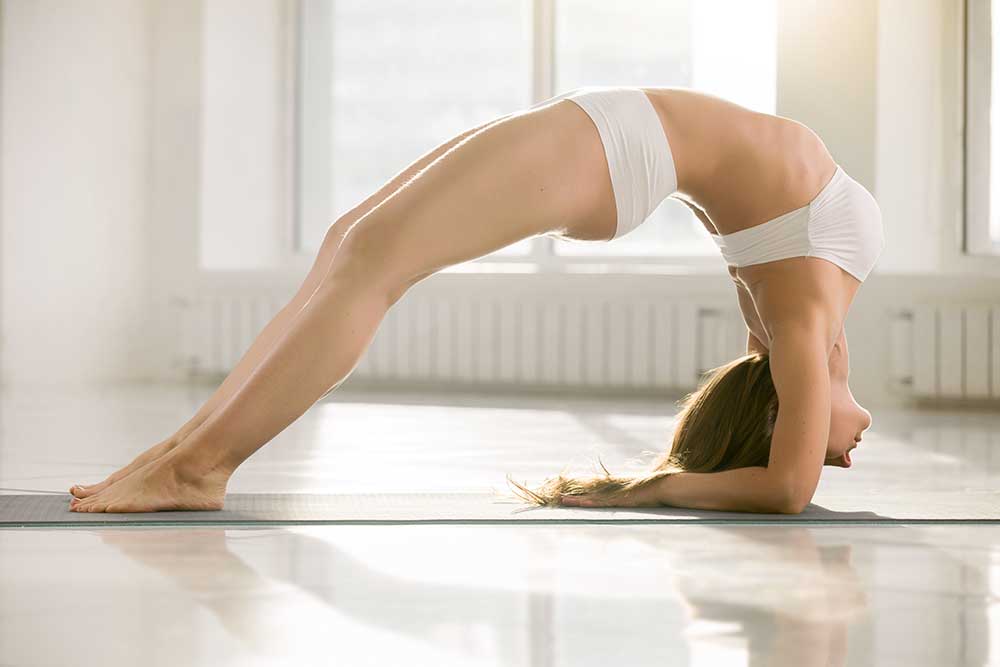
If you can do Wheel Pose with straight arms and a Headstand without straining, then you’re ready for this pose.
Beginners can secure their elbows by elevating them up on a rolled-up sticky mat for extra security.
This pose helps to stretch your entire front body and opens up your chest.
If you feel ready to tackle this posture, click here.
#23 Sayanasana — Scorpion Pose Variation Pose
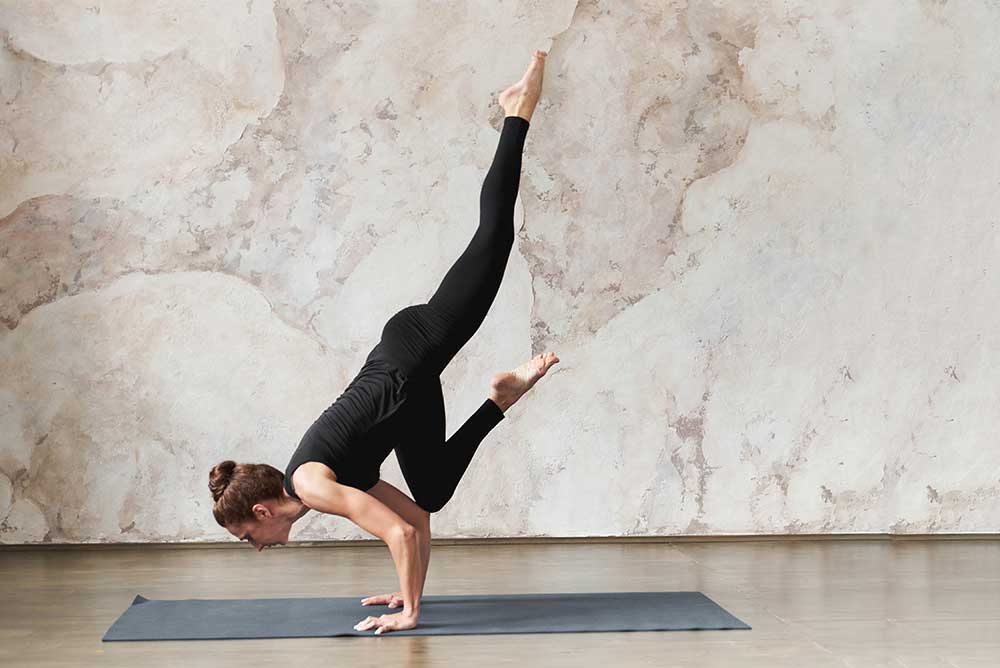
Sayanasana requires you to bear your entire body weight into your elbows while inverted.
While this posture may seem intense, it is actually derived from the Sanskrit word “sayana” which means “resting” or “repose.”
For this pose, you must be comfortable with inversions and shifting your balance.
There’s more stability in this pose with your forearms on the floor, but this variation involves shifting onto your elbows to support your whole body.
If you’re comfortable with all of the above, feel free to click here and get into this pose.
#24 Taraksvasana — Handstand Scorpion Pose

“Taraka” is a demon who was slain by Kartikeya, the god of war, while “sva” means “internal power.”
This pose has two variations, one with both feet resting on the top of your head, and the other with one leg raised straight up.
While regular Scorpion is practiced on the forearms, this variation challenges you to come up on your hands.
This pose improves your balance and increases your internal power while strengthening your shoulders, abdominals, and back muscles.
Tap into your navel chakra and try out this pose by clicking here.
#25 Double Buddhasana — Di Mario’s Knot
Named after the contortionist called Di Mario, this pose is almost impossible to get into by yourself.
It’s even difficult to describe, so we’ll just give you a video tutorial here.
#26 Viparita Parivrtta Surya Yantrasana — Super Soldier Pose
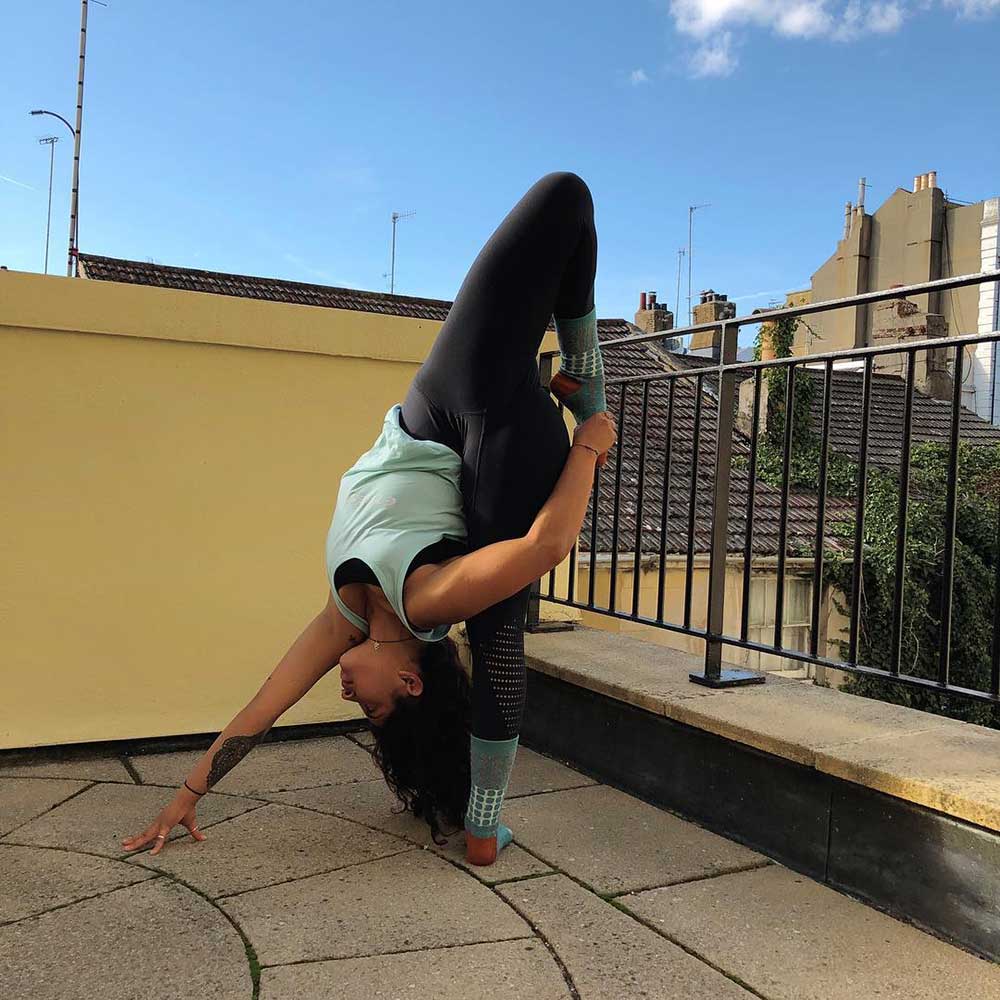
Credits: https://www.facebook.com/yogawitholive/photos/viparita-parivrtta-surya-yantrasana-inverted-compass-pose-or-super-solider%EF%B8%8Fcurre/1870954413020263/
This pose requires open hamstrings, thighs, shoulders, and side bodies.
Super Soldier Pose asks you to balance on one foot while hanging upside down and grabbing your other foot above your butt.
It provides a great full-body stretch, opens up your heart and chest, and improves your balance and stability.
But most importantly, it’s fun.
Try wiggling yourself into this pose by clicking here and remember to laugh.
#27 Karnapidasana — Knee-to-Ear Pose
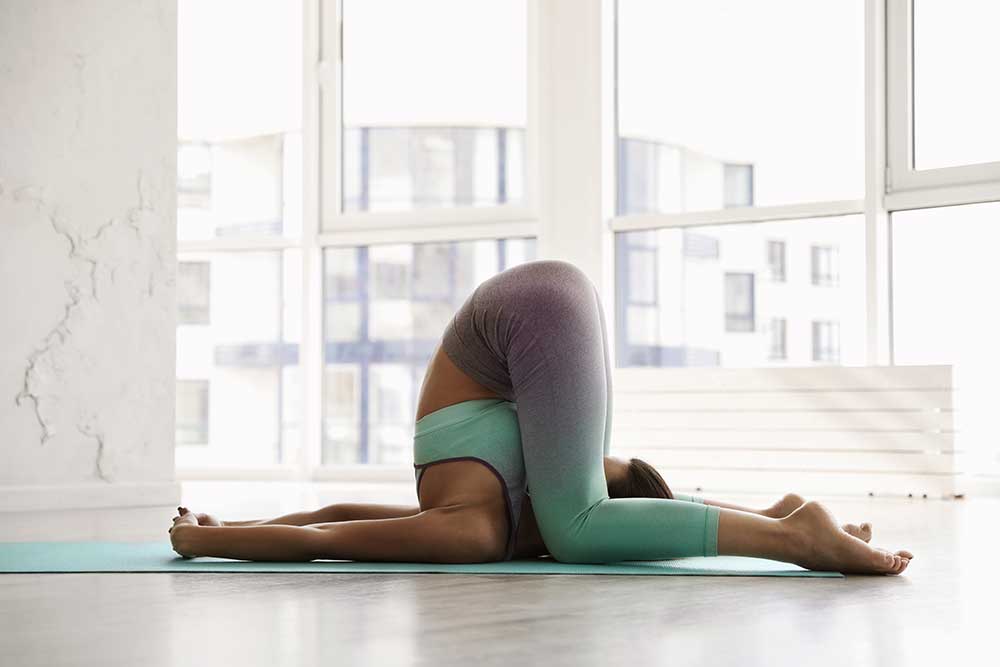
This awkward inversion is an evolution from Halasana, or Plow Pose.
This pose deepens the stretch along the spine. It can actually be quite calming even though it looks a bit strange.
Karnapidasana requires flexibility in the shoulders, hips, back, and hamstrings.
To learn how to perform this pose correctly, click here.
#28 Garbha Pindasana — Embryo Pose
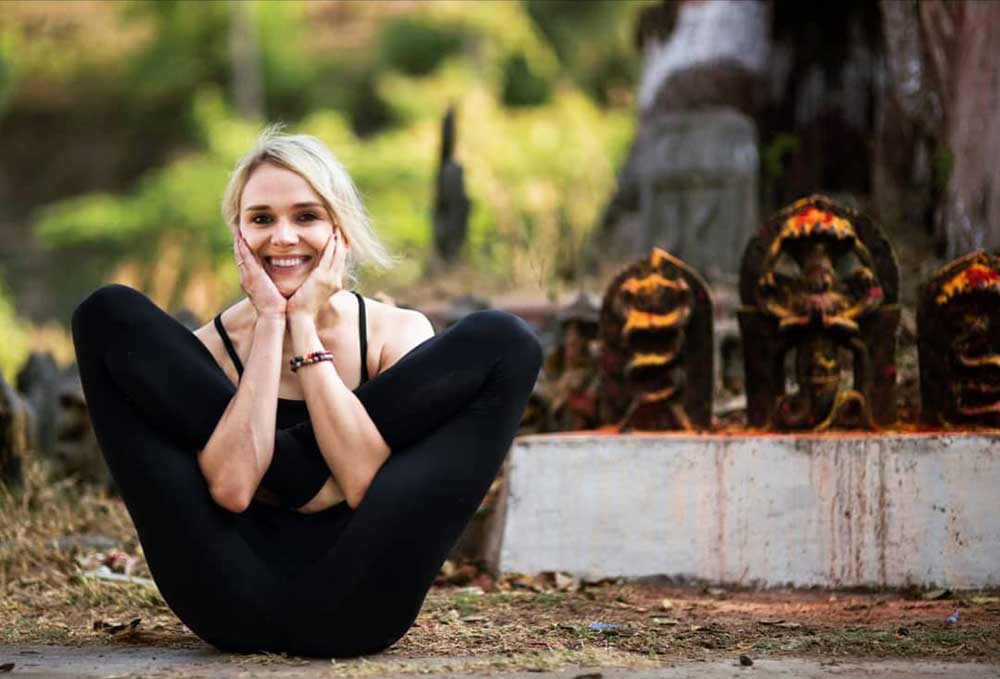
“Garbha” means “womb” while “pinda” means “embryo.”
A practitioner’s ability to do this pose will depend on your comfortability with Lotus Pose.
This silly variation follows a hand balance Kukkutasana which requires sticking your arms through the tiny space behind each bent knee.
Garbha Pindasana helps to strengthen your arms, shoulder, and neck muscles while relaxing your spine. It also helps to increase your hip and knee flexibility.
This pose can improve your digestive health, provide relief from abdominal cramps, and strengthen your abdominal muscles.
If you’d like to return to the womb to relax and stabilize your mind and body, click here.
#29 Yogadandasana — Yogi Staff Pose
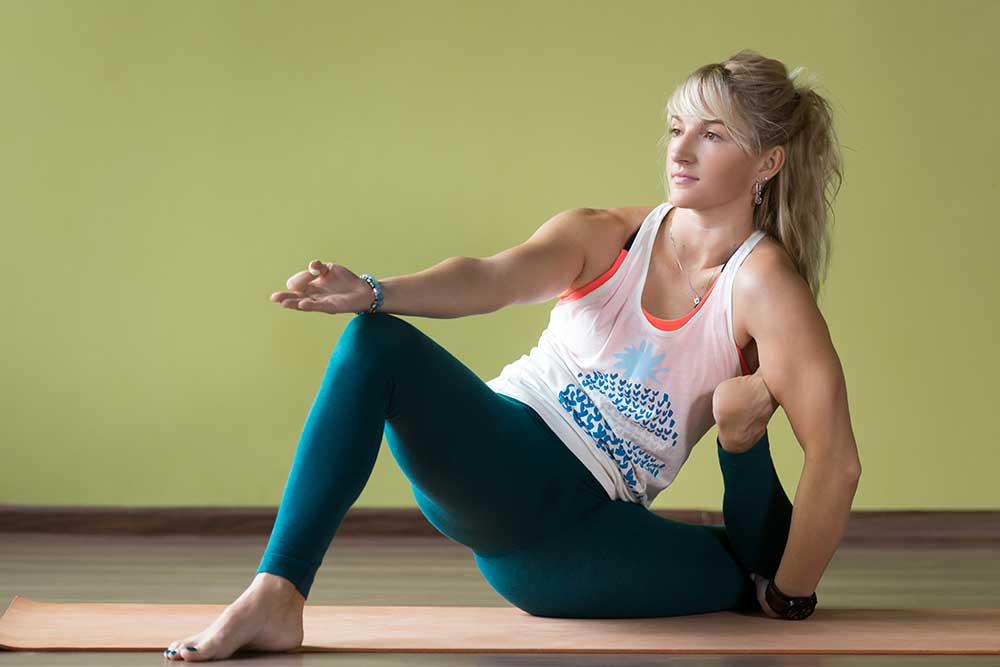
To get into this full posture, you need to be able to externally open up your hips.
Luckily, there are a few variations that are more accessible to help prep for this pose too.
Yogadandasana improves your posture, strengthens your back muscles, lengthen and stretch your spine, and may help relieve complications related to your reproductive organs.
This pose also nourishes your body’s resistance to back and hip injuries while stretching your shoulders and chest.
Calm your brain cells and learn more about this pose by clicking here.
#30 Variation on Kala Bhairavasana — The Exorcist Pose
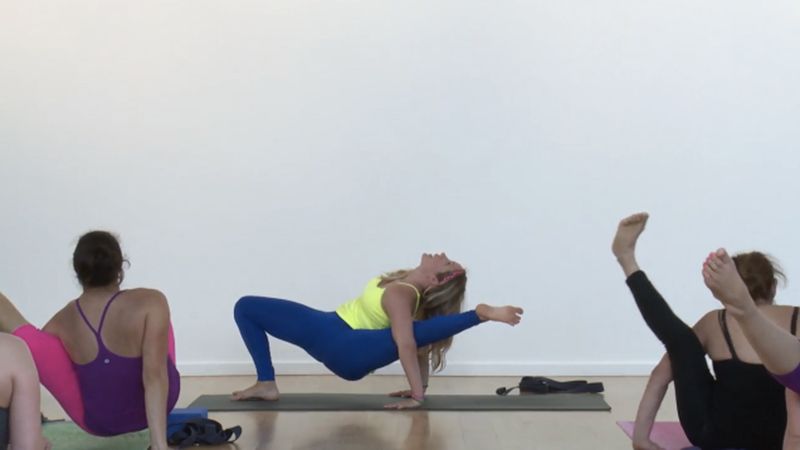
Dubbed by Kathryn Budig, this funky pose is a variation of Kala Bhairavasana (Pose Dedicated to Shiva the Destroyer).
To accomplish this pose, you need a lot of flexibility in your hips, hamstrings, and shoulders. You also need a lot of strength in your hamstrings to keep your top leg straight without the use of your hands.
This posture helps to strengthen your upper body while opening up your hips and releasing your shoulders.
So if you want to freak your friends and family out, learn this pose here.
#31 Urdhva Prasarita Eka Padasana — Standing Splits Against a Wall Pose
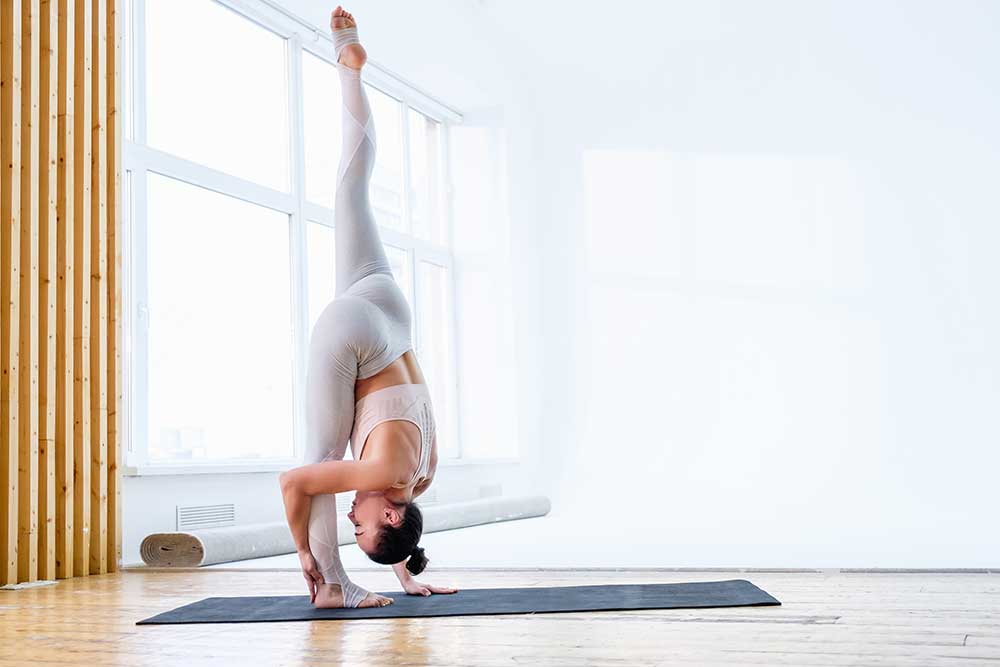
Requiring flexible hamstrings and glutes, this pose stretches the whole back side of your body and strengthens your thighs, knee, and ankles.
To do this pose properly, you must be able to support your entire body weight on one leg while upside down.
Overall, this pose helps to stretch your groin and improve your balance.
To reap the benefits of Urdhva Prasarita Eka Padasana, click here.
#32 Semi — Kneeling Praying Mantis Pose
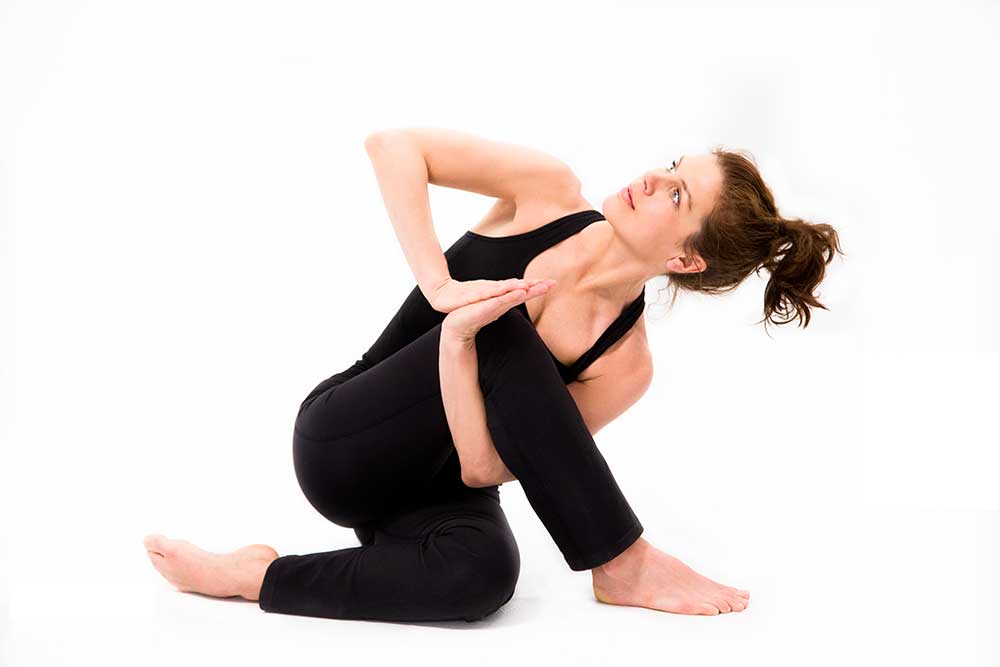
Yogis that attempt this pose must have major flexibility, a strong opening in their inner thighs and hip flexors, and a big opening through their back quad.
When done properly, this pose can help purify the digestive tract.
It also opens up the collarbone, heart, and shoulders while stretching the glutes.
So tap into your inner Praying Mantis and click here to learn more about the pose.
#33 Devaduuta Panna Asana — Fallen Angel Pose
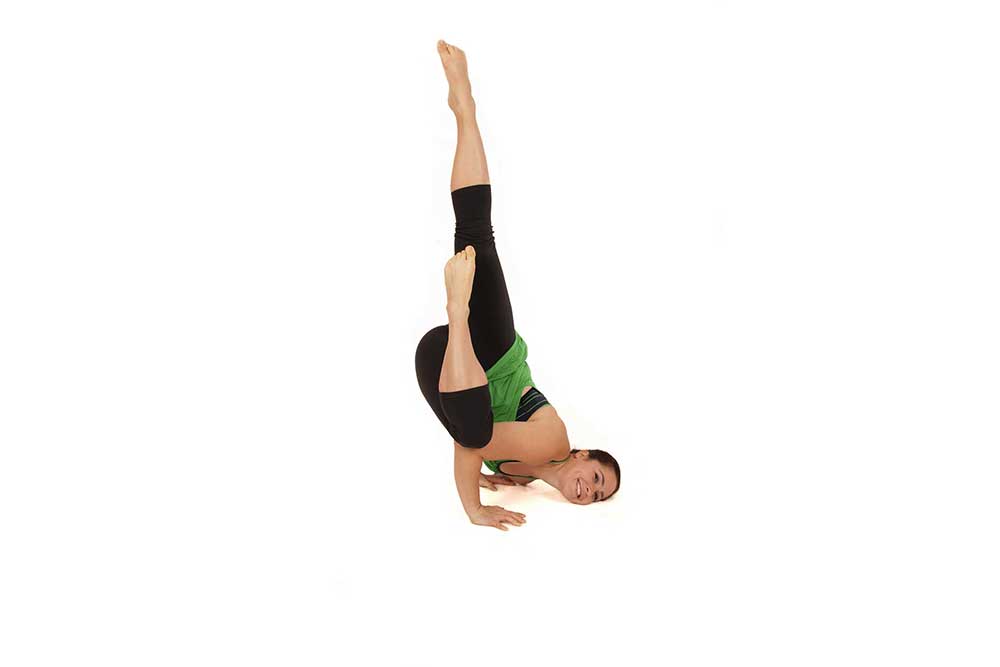
This is a variation of Side Crow, which in and of itself, is already pretty challenging.
Fallen Angel adds core and leg strength elements as it requires you to lift one leg up to the sky.
This pose cultivates discipline, body awareness, and calms the mind. It also creates a deep twist that massages your internal organs and strengthens your arms and shoulders.
Click here to learn how to get into this pose.
#34 Parsva Bakasana — Bound Side Crow Pose
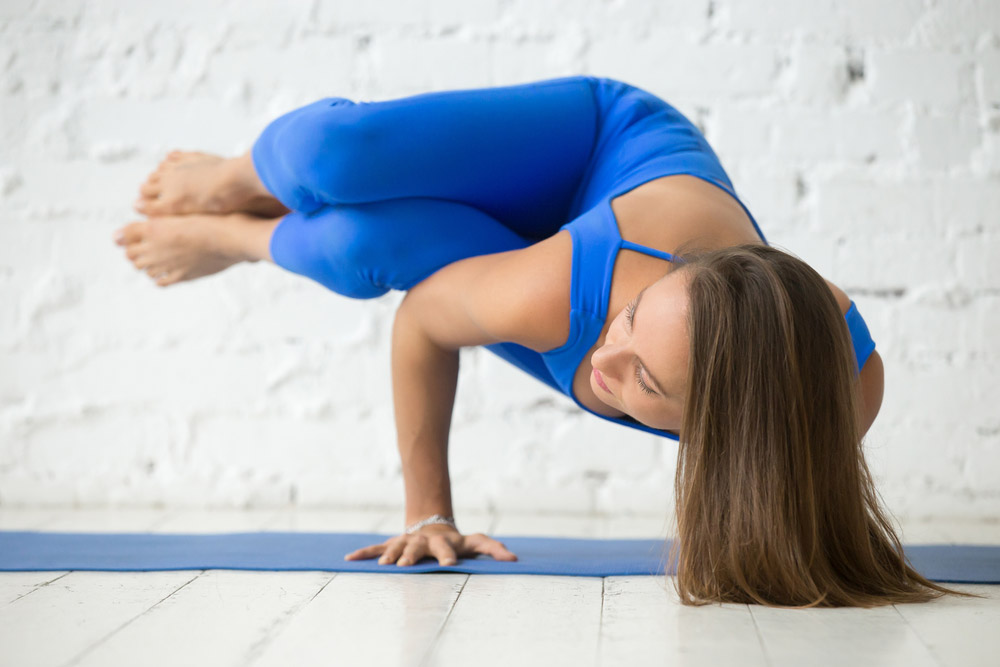
Another variation of Side Crow, this pose opens up your glutes and hamstrings and requires a strong and steady focus.
This pose is traditionally said to activate the navel chakra, which boosts confidence, power, and control.
When done properly, this pose stretches your wrists, strengthens your shoulders, arms, and core strength, and improves your overall sense of balance.
Try out this pose by clicking here.
#35 Eka Pada Urdhva Dhanurasana — One-Legged Forearm Wheel Pose
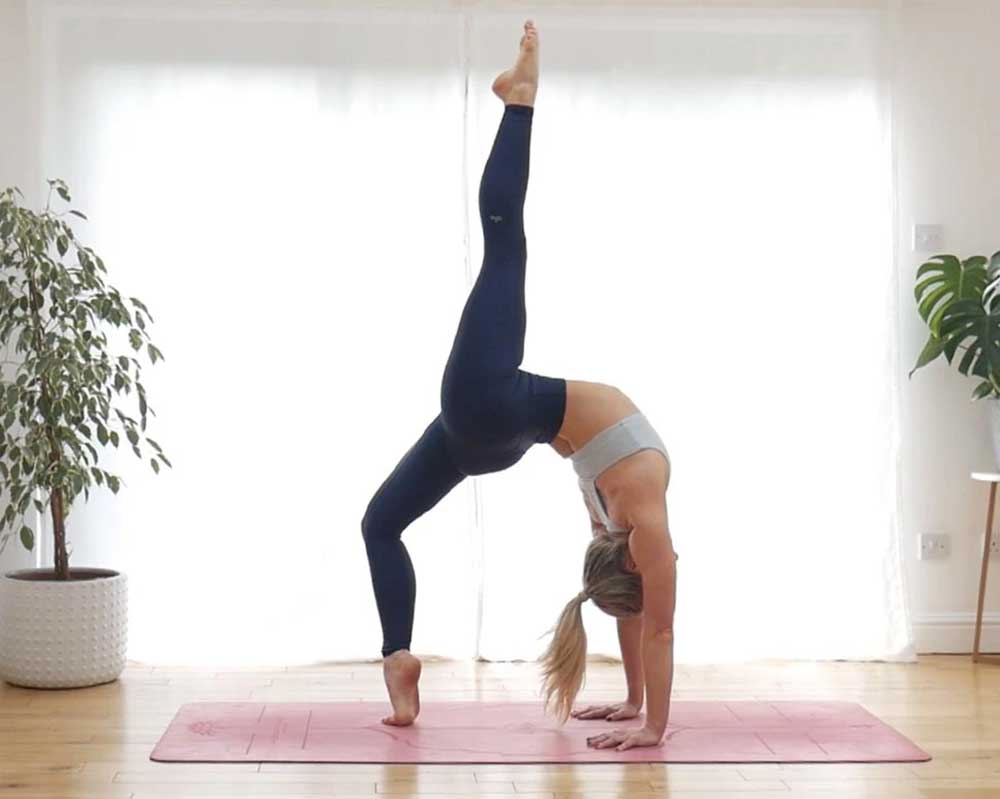
This is a variation of Wheel Pose which is already a pretty intense backbend.
This pose requires you to lower down onto your forearms, opening up your shoulders and triceps. Bringing your legs up to the sky requires extreme core and leg strength.
This full-body stretch helps strengthen the arms, wrists, spine, legs, and abdomen, and open up your lungs. It can also stimulate your thyroid and pituitary glands.
When done properly, this pose can increase your energy and relieve symptoms from asthma and mild depression.
If you’re ready to take your Wheel Pose to the next level, click here.
What's Your Reaction?
Former nutrition specialist Alexandra Mackenzie knows what it means to support the body and mind through food. She’s passionate about sharing her wealth of knowledge with anyone willing to listen.






